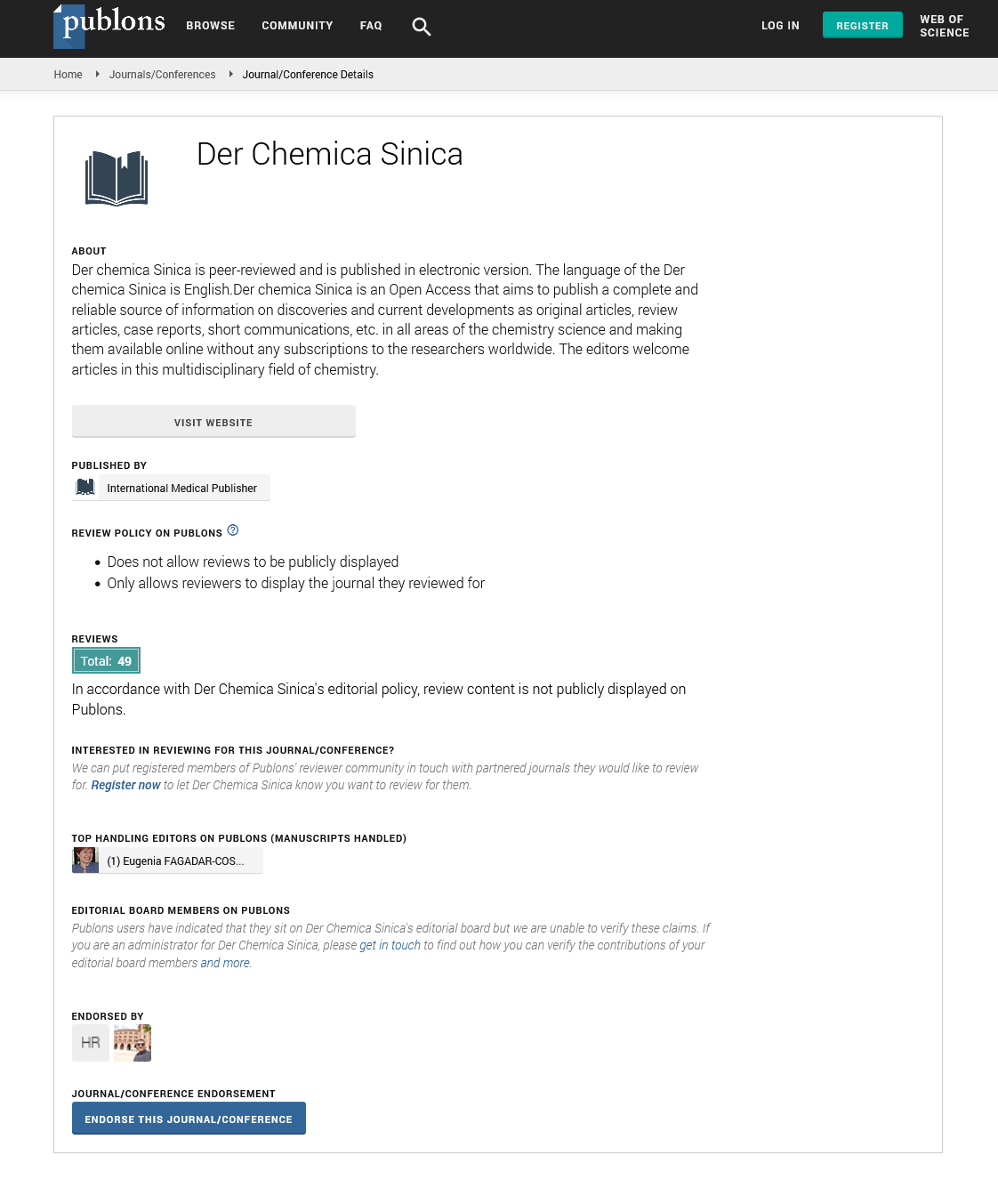ISSN : 0976-8505
Der Chemica Sinica
Abstract
Study of physical chemistry on Biosorption of hexavalant chromium by using Chlorella Pyrenoidosa
Discharge of heavy metals from metal processing industries is known to have adverse effects on the environment. Biosorption of heavy metals by metabolically inactive biomass of microbial organisms is an innovative and alternative technology for removal of these pollutants from aqueous solution. Presence of heavy metals in the aquatic system is posing serious problems and hexavalant chromium has been used in many industrials and removal of Cr (VI) ions from waste waters is significant. Biosorption is one of the economic methods that used for removal of heavy metals. In the present study, the biomass generated from the dried Chlorella pyronoidsa was used for evaluating the biosorption characteristics of Cr (VI) ions in aqueous solutions. Batch adsorption experiments were performed on these leaves and it was found that the amount of metal ions adsorbed increased with the increase in the initial metal ion concentration. In this study effect of agitation time, initial metal ion concentration, temperature, pH & biomass dosage were studied. Maximum metal uptake was observed at pH= 5. Maximum metal uptake (qmax) was 142.86 mg/g .The biosorption followed both Langmuir and Freundlich isotherm model but Freundlich isotherm model was better than Langmuir with R2= 0.985. The adsorption equilibrium was reached in about 1 h. The kinetic of biosorption followed the second – order rate. The biomass could be regenerated using 0.1 M HNO3. A positive value of ΔH° indicated the endothermic nature of the process. A negative value of the free energy (ΔG°) indicated the spontaneous nature of the adsorption process. A positive value of ΔS° showed increased randomness at solid–liquid interface during the adsorption of heavy metals, it also suggests some structural changes in the adsorbate and the adsorbent. FTIR Spectrums of Chlorella pyrenoidosa revealed the presence of hydroxyl, amino, carboxylic and carbonyl groups. The scanning electron micrograph (SEM) clearly revealed the surface texture and morphology of the biosorbent.
Author(s): Hassan Rezaei, Satish D Kulkarni, Praveen G Saptarshi
Abstract | PDF
Share This Article
Google Scholar citation report
Citations : 6019
Der Chemica Sinica received 6019 citations as per Google Scholar report
Der Chemica Sinica peer review process verified at publons
Abstracted/Indexed in
- Google Scholar
- Open J Gate
- Genamics JournalSeek
- China National Knowledge Infrastructure (CNKI)
- Directory of Research Journal Indexing (DRJI)
- Publons
- MIAR
- International Committee of Medical Journal Editors (ICMJE)
- Serials Union Catalogue (SUNCAT)
- Geneva Foundation for Medical Education and Research
- Secret Search Engine Labs
- Euro Pub
- CAS (Chemical Abstracting Services)
- University of Barcelona
Open Access Journals
- Aquaculture & Veterinary Science
- Chemistry & Chemical Sciences
- Clinical Sciences
- Engineering
- General Science
- Genetics & Molecular Biology
- Health Care & Nursing
- Immunology & Microbiology
- Materials Science
- Mathematics & Physics
- Medical Sciences
- Neurology & Psychiatry
- Oncology & Cancer Science
- Pharmaceutical Sciences
